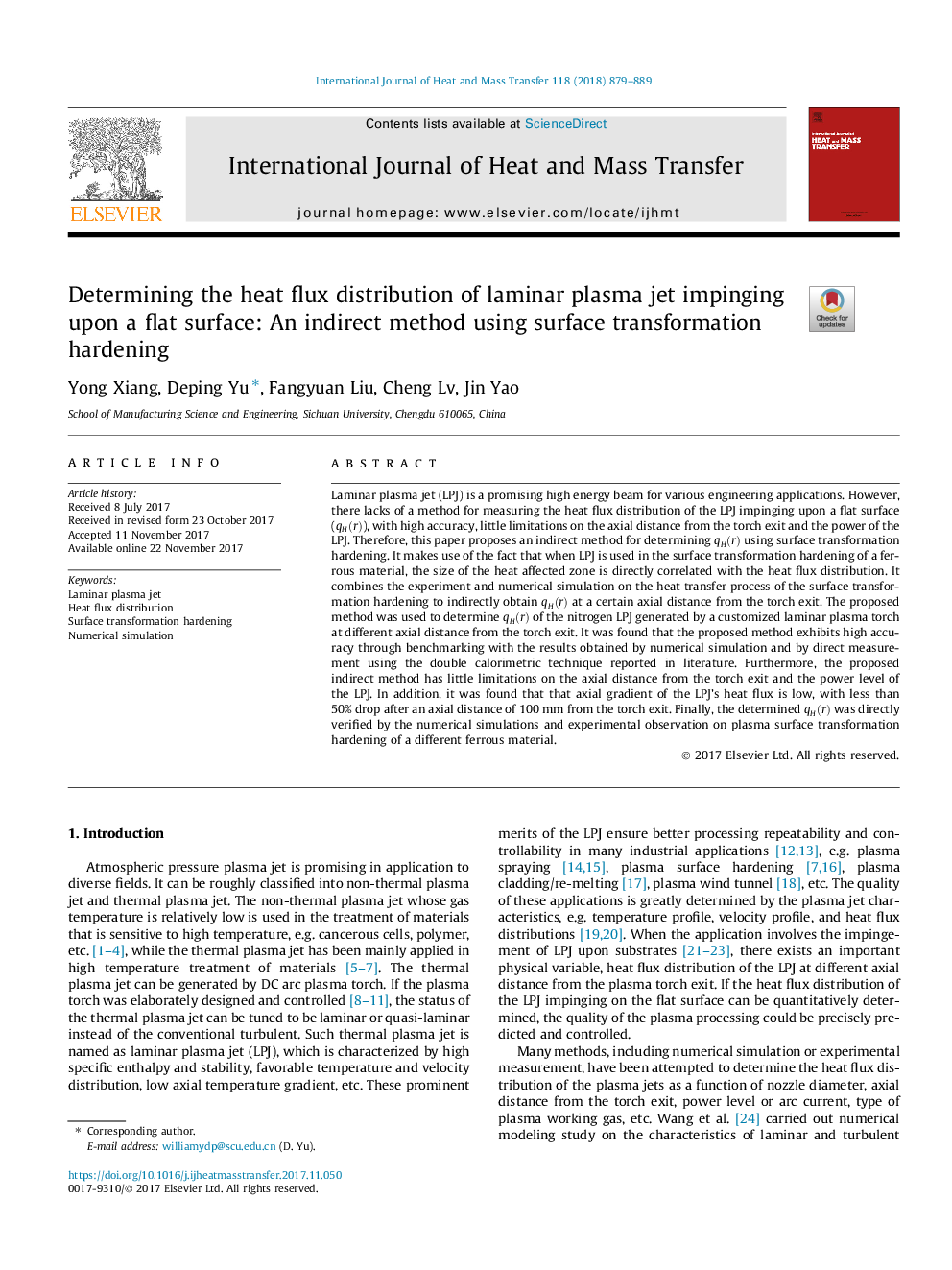| Article ID | Journal | Published Year | Pages | File Type |
|---|---|---|---|---|
| 7054807 | International Journal of Heat and Mass Transfer | 2018 | 11 Pages |
Abstract
Laminar plasma jet (LPJ) is a promising high energy beam for various engineering applications. However, there lacks of a method for measuring the heat flux distribution of the LPJ impinging upon a flat surface (qH(r)), with high accuracy, little limitations on the axial distance from the torch exit and the power of the LPJ. Therefore, this paper proposes an indirect method for determining qH(r) using surface transformation hardening. It makes use of the fact that when LPJ is used in the surface transformation hardening of a ferrous material, the size of the heat affected zone is directly correlated with the heat flux distribution. It combines the experiment and numerical simulation on the heat transfer process of the surface transformation hardening to indirectly obtain qH(r) at a certain axial distance from the torch exit. The proposed method was used to determine qH(r) of the nitrogen LPJ generated by a customized laminar plasma torch at different axial distance from the torch exit. It was found that the proposed method exhibits high accuracy through benchmarking with the results obtained by numerical simulation and by direct measurement using the double calorimetric technique reported in literature. Furthermore, the proposed indirect method has little limitations on the axial distance from the torch exit and the power level of the LPJ. In addition, it was found that that axial gradient of the LPJ's heat flux is low, with less than 50% drop after an axial distance of 100â¯mm from the torch exit. Finally, the determined qH(r) was directly verified by the numerical simulations and experimental observation on plasma surface transformation hardening of a different ferrous material.
Related Topics
Physical Sciences and Engineering
Chemical Engineering
Fluid Flow and Transfer Processes
Authors
Yong Xiang, Deping Yu, Fangyuan Liu, Cheng Lv, Jin Yao,
